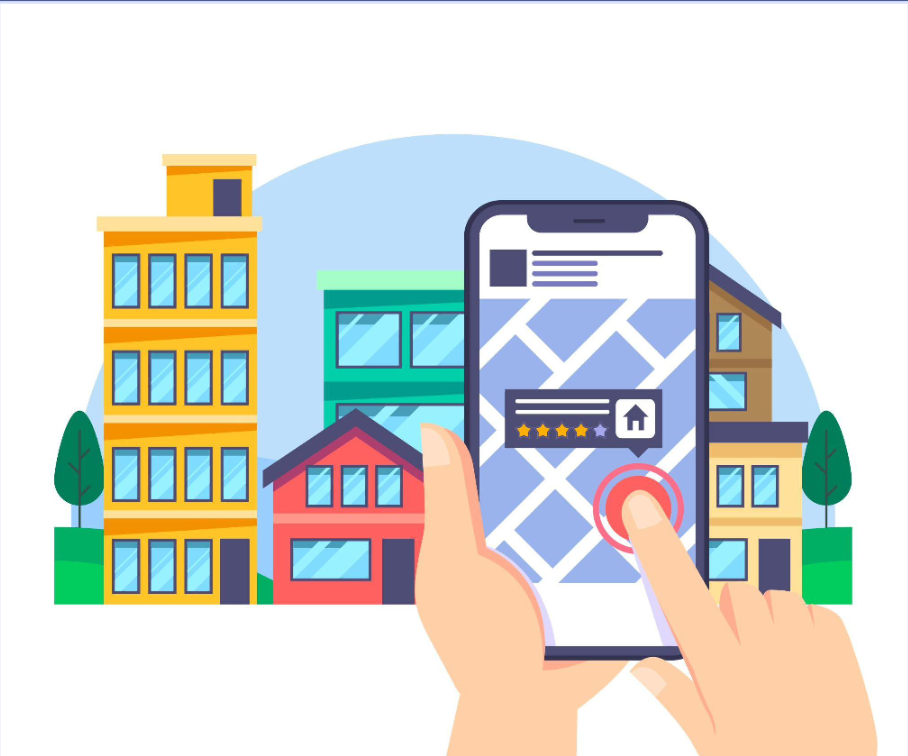Real estate is one of the booming sectors of the Middle East – one that never slows down in terms of demand and revenue. Population in the middle east need residential and commercial properties, luxury and conventional properties, for buying, renting and subletting purposes. And ever since the mobile apps have entered the property ecosystem, the game has changed for all stakeholders, from home buyers to realtors and brokers. If you too are an aspiring real estate business planning to launch a home hunting app, here is a quick list of 48 KPIs you’ll have to perform. If you are from a non-tech business background, use this checklist to discuss the timelines and milestones with your app development company in Dubai before starting the scope of work.

Step 1: Planning The Real Estate App Development Process
- Define App Goals
Establish objectives such as facilitating property searches, connecting buyers and sellers, and generating revenue through listings or ads.
- Identify Target Audience
Understand the demographics, preferences, and needs of potential users including buyers, sellers, and real estate agents.
- Conduct Market Research
Analyze the real estate app market, including current trends, user behavior, and competitor strategies.
- Analyze Competitors
Study successful real estate apps to identify best practices, popular features, and areas for differentiation.
- Create a Feature List
Develop a comprehensive list of features such as advanced search filters, map integration, virtual tours, and contact forms.
- Establish Budget
Determine the budget for design, development, content creation, marketing, and ongoing maintenance.
- Set Timeline
Create a realistic timeline for each phase of the project to ensure timely delivery.
- Develop a Project Plan
Outline tasks, milestones, and responsibilities, ensuring all team members are aligned and aware of their roles.
Step 2: Prototyping The UI/UX
- Sketch Basic Layouts
Draw initial layouts for key screens such as the home screen, property listings, and detailed property pages.
- Define Navigation Structure
Create a clear and intuitive navigation system that allows users to easily browse and search for properties.
- Create Low-Fidelity Wireframes
Develop wireframes focusing on layout and functionality without detailed design elements.
- Plan User Flow
Map out the user journey from searching for properties to contacting sellers or agents.
- Get Stakeholder Feedback on Wireframes
Collect feedback from potential users, real estate agents, and stakeholders to refine the wireframes.
- Create High-Fidelity Mockups
Design detailed mockups with visual elements, including colors, fonts, and images, reflecting the brand identity.
- Choose Color Scheme and Typography
Select colors and fonts that convey professionalism and appeal to the target audience.
- Conduct Usability Testing and Revise Mockups
Test the mockups with users to identify usability issues and make necessary revisions.
Step 3: Monetization Strategy
- Research Monetization Options
Explore different revenue models, such as listing fees, premium listings, ads, and subscription services.
- Analyze Competitor Monetization Models
Understand how competitors monetize their real estate apps to identify effective strategies.
- Define Pricing Strategy
Develop a pricing model for listings, premium features, and subscription services that balances affordability and profitability.
- Plan Premium Features
Offer premium features like enhanced visibility for listings, priority placement, and virtual tours for a fee.
- Implement Ad Placements
Integrate ads in a non-intrusive manner, ensuring they complement the user experience without being disruptive.
- Consider Subscription Services
Offer subscription plans for agents and sellers with benefits like unlimited listings, detailed analytics, and lead generation tools.
- Estimate Revenue Projections
Project potential revenue based on chosen monetization strategies and market analysis.
- Get Stakeholder Approval
Ensure all stakeholders agree on the monetization strategy to align with business goals and user expectations.
Step 4: Development
- Set Up Development Environment
Configure the development environment with necessary tools and frameworks for building the mobile app.
- Develop Frontend Code (UI/UX)
Create the user interface using appropriate mobile development frameworks, ensuring responsiveness and cross-platform compatibility with the expertise of web developers in Dubai.
- Implement Property Listing and Search Functionality
Develop features for browsing, searching, and filtering property listings effectively.
- Develop Backend Code
Build server-side functionality to manage property data, user accounts, and transactions.
- Integrate Map and Location Services
Implement map integration to provide location-based search and property viewing.
- Implement Security Measures
Secure the app with encryption, authentication, and other security protocols to protect user data.
- Set Up Database
Design and configure a database to store property information, user data, and transaction records.
- Optimize Performance
Ensure fast loading times and smooth performance by optimizing images, code, and server configurations.
Step 5: Testing and Launch
- Perform Functional Testing
Test all features and functionalities to ensure they work as intended, including property search, listing, and contact forms.
- Conduct User Acceptance Testing (UAT)
Involve potential users and real estate agents in testing to validate the app meets their needs and expectations.
- Test on Multiple Devices
Ensure the app is fully functional and visually appealing on various devices and operating systems.
- Conduct Security Testing
Identify and fix vulnerabilities to protect the app and user data from potential threats.
- Perform Performance Testing
Evaluate the app’s speed, responsiveness, and scalability under different conditions.
- Fix Bugs and Issues
Address any bugs or issues identified during testing to ensure a smooth user experience.
- Prepare for App Store Submission
Ensure the app complies with app store guidelines and requirements for smooth submission and approval.
- Launch the App
Go live with the app, making it accessible to users and starting to monitor its performance and user engagement.
Step 6: Marketing
- Develop Marketing Plan
Create a comprehensive marketing strategy to promote the app and attract users.
- Create Promotional Content
Develop engaging content, such as videos, blog posts, and social media updates, to attract and retain users.
- Optimize App Store Listing (ASO)
Implement ASO best practices to improve the app’s visibility in app store search results.
- Plan Social Media Campaigns
Use social media platforms to reach a wider audience, share property highlights, and engage with users.
- Engage with Real Estate Influencers and Bloggers
Partner with real estate influencers and bloggers to promote the app and increase its credibility.
- Launch Email Marketing Campaigns
Use email marketing to nurture leads, share new listings, and provide exclusive offers to subscribers.
- Monitor User Feedback and Reviews
Regularly check user feedback and reviews to identify areas for improvement and address any issues promptly.
- Analyze Marketing Metrics and Adjust Strategy
Continuously monitor marketing performance and adjust strategies based on data and insights to achieve better results.





